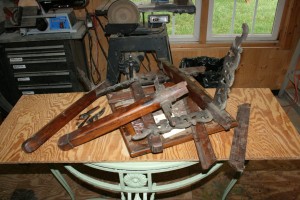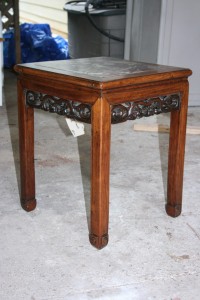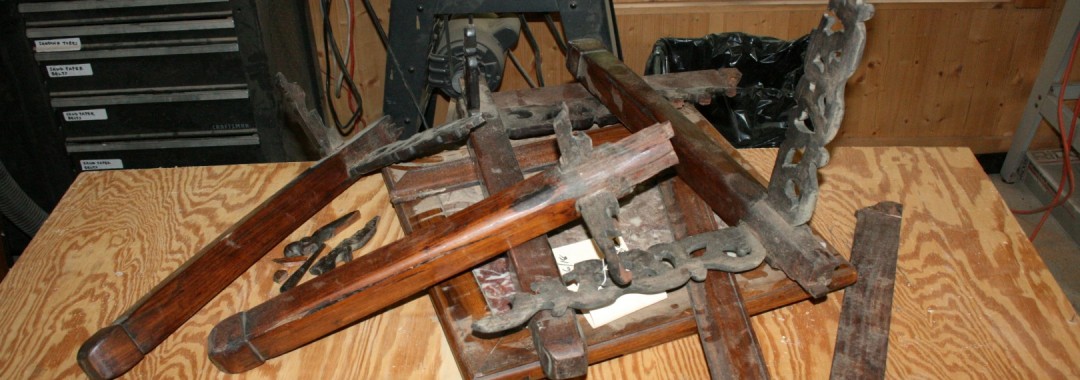Restoration of a 19th Century Chinese Rosewood Table
One summer afternoon, a client brought a box into Capital Restoration containing the fragments of a table and asked if it could possibly be repaired. Upon examination, it was determined that the table was Chinese and made in the nineteenth century from East Indian Rosewood.
It had the traditional miter joint leg corners, favored by the Chinese craftsmen as the most aesthetically pleasing way to join wood at right angles. Below the table top ran a pieced and carved apron and the top was an inset slab of polished marble. All of the component pieces were present except some fragments of the carved aprons.

The table in pieces with broken carved aprons.
The first task was to repair the aprons and the broken pieces were glued together with cyanoacrylate adhesive. This was chosen because of it strength and ability to adhere to oily woods such as rosewood. The missing fragments of carving were filled in with slivers of rosewood and carved to shape.
Next, all of the old glue was carefully scraped out of the joints. The glue of choice for traditional Chinese woodworkers was fish glue and this was used to re-glue all of the joints. This ancient glue is extremely versatile and strong and in many ways superior to modern adhesives although it is not as convenient to use.
The rosewood had been hand scraped to a very smooth texture and had a simple oil finish. Before the advent of sandpaper, wood was smoothed with steel scrapers which actually cut the wood cells producing a more radiant figure from the reflected light.
Wishing to maintain the original appearance and patina of the wood and finish, a minimal approach was used for its restoration. The finish was cleaned with mineral spirits and several fresh coats of walnut oil finish were applied with a cloth resulting in a matte sheen.

The table after reassembly, cleaning and polishing.
A colored paste wax was applied and the finished buffed to a soft luster. The final step in the restoration of this beautiful table was to clean the marble top with and polish it with microcrystalline wax which provides both protection and shine.
When restoring antique furniture and decorative arts, it is important that the restorer have a thorough understanding of the materials and methods of the original craftsman. The use of the incorrect materials or methods can lead to a failure in repairs, unanticipated deterioration of the object and adverse effects on its appearance.
At Capital Restoration, all pieces which come to our studio receive a careful evaluation and a treatment proposal outlining the restoration process to be followed.

